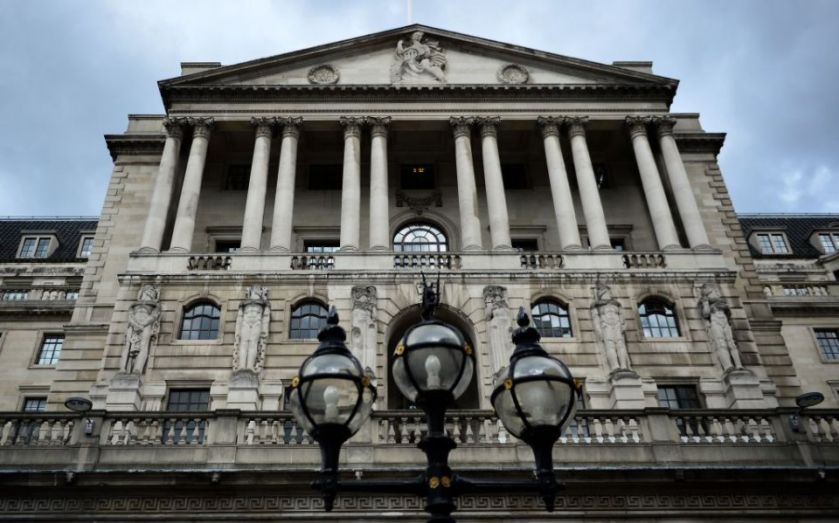The Bank of England could – and should– have raised UK interest rates much sooner

Heartening as it was to hear the governor of the Bank of England, Mark Carney, dropping hints last week about the raising of Bank Rate, serious doubts remain over the effectiveness of the low interest rate regime in reviving the economy. Moreover, the impression continues to be given that the delay in raising rates carries no cost.
The popular characterisation of the Monetary Policy Committee’s (MPC) decision to postpone the normalisation of interest rates is what I call the Bobsleigh Effect: allowing the runners a few more metres before jumping on, so as to give the sleigh extra momentum at the top of the track. It is asserted that every month that Bank Rate remains at its emergency low of 0.5 per cent, the better are the chances of creating a self-sustaining UK economic recovery.
There is a persuasive counter-narrative: it was the loosening of credit conditions by other means (the Funding for Lending Scheme, Help to Buy, etc) that was the catalyst for UK economic acceleration in late 2012, and that this would not have been much hindered by a parallel normalisation of Bank Rate. Indeed, the blip in activity during the first three months of 2015 was closely connected to concerns that the housing market, in particular, was under threat from Labour and Liberal Democrat tax plans. The formation of a Conservative government has dismissed these concerns, and sparked a notable brightening in consumer confidence and housing market activity since May.
Further, in a world of complex financial structures, abundant financial regulations and constraints, and a proliferation of credit instruments, the mere description of “credit conditions” becomes problematic. Credit conditions embrace not only the level of Bank Rate but also the shape of the sterling yield curve, the terms and cost of access to credit for borrowers of differing types and sizes, and the term structure of interest rate expectations. Bank Rate was last lowered in March 2009, but quoted mortgage rates have fallen significantly over the past three years. While there has been no formal relaxation of UK monetary policy since late-2012, when the last dose of QE was administered, credit access for individual and small business borrowers has improved materially.
Taking the argument even further, US economists, such as Stephen Williamson and John Cochrane, contend that ultra-low interest rates are in fact an obstacle to the achievement of central banks’ inflation objectives. Irving Fisher taught that there should be an inflation premium built into the observed nominal interest rate. Perversely, to the Keynesian mainstream, lifting short-term interest rates from very low levels raises credibility in the pursuit of the (2 per cent) inflation target by restoring the inflation premium.
Alternatively, individuals and businesses may interpret persistently low interest rates as a portent of economic danger. Rather than spurring an eagerness to borrow, spend and invest, “lower for longer” fosters speculation in financial (rather than tangible) assets, a desire to exercise share options and to squirrel away capital gains.
An unwillingness to entertain other explanations of observed economic behaviour has contributed to the MPC’s inertia in recent years. Any MPC between 1997 and 2007 would have reacted to post-2012 developments in the product, labour and housing markets by raising interest rates. The post-crisis MPC has been sitting on its hands for so long that the circulation to its button-finger has been cut off. If rates are “stuck” at the lower bound, it is because the committee is “stuck” with a dodgy paradigm. Casting the policy decision framework narrowly in terms of the perceived “slack” in the economy grants the MPC far too much latitude in the assessment of the inflation context and outlook. The recent acceleration of average earnings in the private sector belies the Committee’s judgement on the degree of spare capacity in the labour market.
Is the delay in raising rates without cost? Absolutely not. From a moribund Libor market to a frothy fixed-income market and an exuberant takeover market, the costs and distortions associated with the regime of 0.5 per cent Bank Rate are clear. Young mortgage borrowers with no understanding of the implications of normalised interest rates for their monthly mortgage payments; pensioners who have abandoned bank deposits for income-earning assets without capital protection.
Persistently low interest rates have an impressive track record in the misallocation of capital, not least in 1980s Japan. The longer the regime is sustained, the greater the mythology and paranoia that builds up around it. The dread of the policymaker is that even a slight increase in interest rates would bring a nascent economic expansion juddering to a halt. That same fear emboldens leveraged investors to engage in the most outrageous financial engineering. It is high time to end the UK’s interest rate taboo.